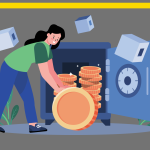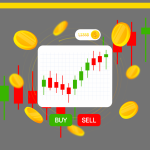Bitcoin halving is one of the most talked-about events in the cryptocurrency world, but why does it matter so much? If you’ve ever wondered what Bitcoin halving is, how it works, and why it sends ripples through the entire crypto market, you’ve come to the right place. Let’s break down the concept of Bitcoin halving and explore its significance in the world of digital currencies.
What is Bitcoin Halving?
At its core, Bitcoin halving is a scheduled event that reduces the reward miners receive for adding new blocks to the blockchain by half. This happens approximately every four years, or every 210,000 blocks. But why does this matter, and what does it mean for the rest of us?
The Origin of Bitcoin Halving
The concept of halving was introduced by Bitcoin’s mysterious creator, Satoshi Nakamoto, as part of the cryptocurrency’s core design. The idea was to create a deflationary asset, one that would grow scarcer over time, unlike traditional fiat currencies, which can be printed in unlimited quantities by central banks. By cutting the mining rewards in half periodically, Bitcoin’s supply is controlled, making it a digital asset that is both scarce and valuable.
The Halving Process Explained
Bitcoin’s halving is a straightforward process embedded in its code. Every time 210,000 blocks are mined (roughly every four years), the reward for mining new blocks is cut in half. For example, when Bitcoin first launched in 2009, miners received 50 BTC for every block they added to the blockchain. The first halving in 2012 reduced this reward to 25 BTC, the second in 2016 brought it down to 12.5 BTC, and the most recent halving in 2020 reduced it further to 6.25 BTC. The next halving, expected in 2024, will cut this reward to 3.125 BTC.
Why Does Bitcoin Halving Matter?
Now, you might be thinking, “Why should I care about Bitcoin halving?” Well, Bitcoin halving plays a crucial role in the cryptocurrency ecosystem and has several important implications.
Controlling Inflation
One of the primary reasons halving exists is to control inflation. Unlike traditional currencies, where governments can print more money, increasing supply and reducing value, Bitcoin’s supply is capped at 21 million coins. Halving ensures that new Bitcoins are introduced to the market at a decreasing rate, which helps to control inflation and preserve value over time.
Impact on Miners
Miners are the backbone of the Bitcoin network, verifying transactions and securing the blockchain. However, halving has a significant impact on their profitability. With each halving, miners receive fewer Bitcoins for the same amount of work. This reduction in rewards can force less efficient miners out of the market, while those with more efficient operations or cheaper electricity costs continue to thrive.
Market Reactions to Halving Events
Historically, Bitcoin halving events have had a profound impact on the market. Each halving has been followed by a significant increase in Bitcoin’s price, although the timing and magnitude of these increases can vary. For example, after the 2012 halving, Bitcoin’s price rose from around $12 to over $1,000 within a year. The 2016 halving saw a similar trend, with prices surging from $650 to nearly $20,000 by the end of 2017. The most recent halving in 2020 also preceded a substantial bull run, pushing Bitcoin’s price to new all-time highs.
The Economic Implications of Halving
Bitcoin halving doesn’t just affect miners and traders — it has broader economic implications as well.
Supply and Demand Dynamics
With each halving, the supply of new Bitcoins entering the market is cut in half, which, assuming demand remains constant or increases, can lead to upward pressure on prices. This basic economic principle of supply and demand is one of the key reasons why halving events are so closely watched by investors.
Speculative Behavior in the Market
Halving events often trigger speculative behavior in the market. Traders and investors anticipate price increases and may buy Bitcoin in advance of the halving, contributing to price volatility. However, this speculative behavior can also lead to sudden sell-offs if the anticipated price surge doesn’t materialize as expected.
Preparing for the Next Halving
If you’re an investor, you might be wondering how to prepare for the next Bitcoin halving. Here are a few strategies:
Analyzing Historical Data
One way to prepare is by analyzing historical data from previous halving events. While past performance doesn’t guarantee future results, looking at how the market has reacted to previous halvings can provide some insights into potential future trends.
Diversifying Investment Portfolios
Diversification is key to managing risk, especially in a volatile market like cryptocurrency. Instead of putting all your eggs in one basket, consider spreading your investments across different assets, including both crypto and traditional assets.
The Future of Bitcoin Post-Halving
What does the future hold for Bitcoin after its next halving? There are many possibilities, but one thing is certain: the conversation around Bitcoin halving isn’t going away anytime soon.
Long-Term Outlook for Bitcoin
Bitcoin’s finite supply and halving mechanism suggest a deflationary future, where the asset becomes increasingly scarce. This scarcity could continue to drive demand, especially among institutional investors looking for an inflation hedge.
Challenges Facing Bitcoin After Halving
However, Bitcoin is not without its challenges. Regulatory uncertainty, technological advancements, and the potential for increased competition from other cryptocurrencies could all impact Bitcoin’s trajectory post-halving.
Conclusion
Bitcoin halving is a fundamental part of the cryptocurrency’s DNA. It controls supply, impacts market dynamics, and has significant implications for miners, investors, and the broader economy. As we look to the future, understanding the role of halving in Bitcoin’s ecosystem will be crucial for anyone interested in digital assets.











 Bitcoin
Bitcoin  Ethereum
Ethereum  Tether
Tether  Solana
Solana  USDC
USDC  XRP
XRP  Lido Staked Ether
Lido Staked Ether  Dogecoin
Dogecoin  Toncoin
Toncoin